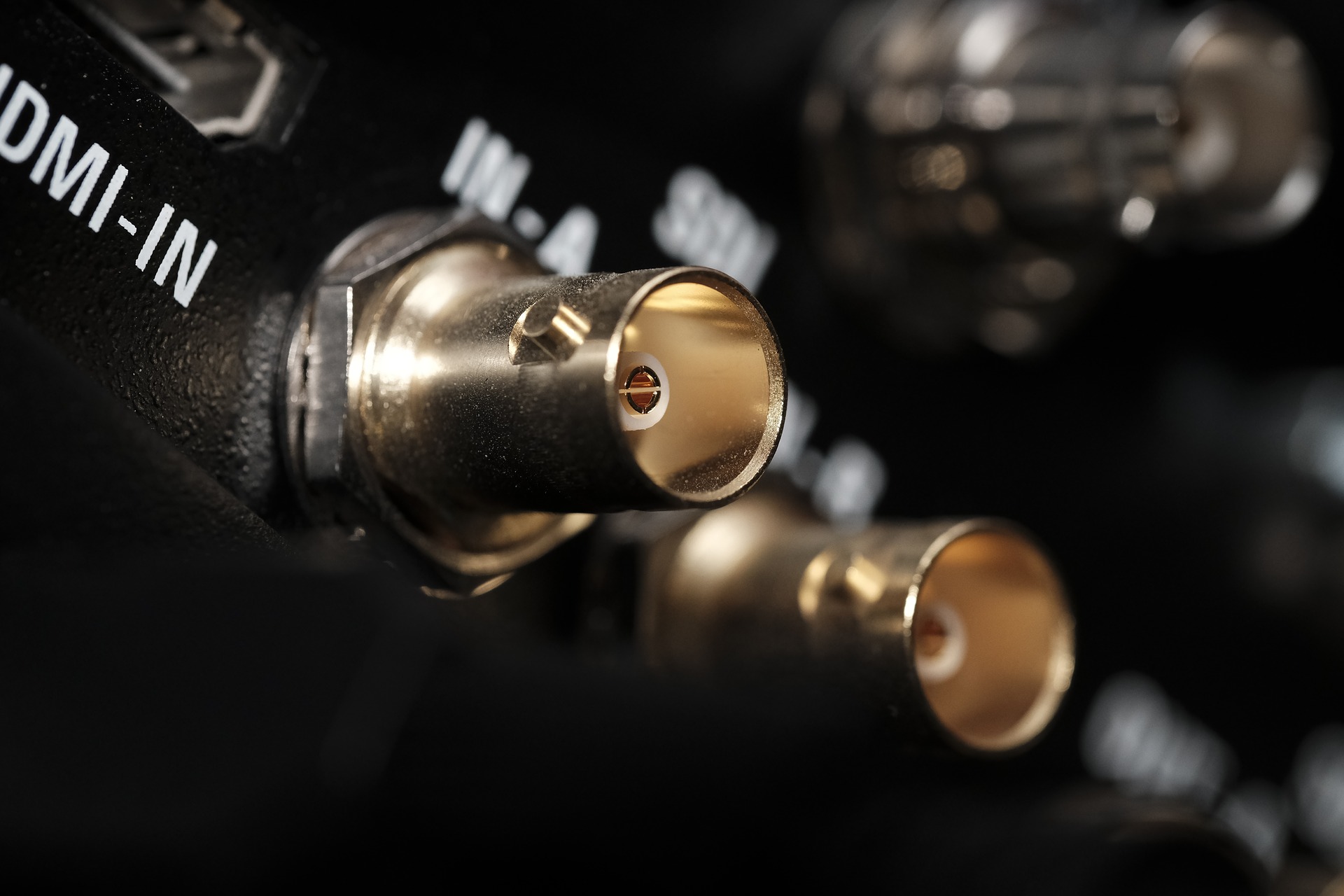Viewing angle – Which screen is best?
Picture quality is one of the most important rating factors for televisions and has a significant influence on the assessment of a TV. In addition to resolution, color depth, brightness and contrast, a good, wide viewing angle can determine whether the overall visual impression is “only” very good or excellent. In our overview, we show you what you should look for when buying a new TV and which advantages and disadvantages the respective panel technologies have in terms of viewing angels.
The number of different panel standards has increased steadily over the past few years. TV manufacturers such as LG, Samsung and Sony are constantly coming up with all kinds of new technologies. Whether it’s panels with vertical backlighting, mini-LEDs with FALD, self-luminous pixels in OLED TVs from LG Display or Evo panels. But what about the viewing angle for these standards? Is there a technology that stands out at this point? Depending on where in the room you have placed your seating, it might be necessary to consider a TV with the widest possible viewing angle.
What exactly does “viewing angle” actually mean?

Well, basically this explanation is simpler than you might think. Basically, the value of a viewing angle indicates how far you can move to either side of a screen without sacrificing brightness.
As you may have noticed, at this point we’re talking about horizontal viewing, since the vertical angle usually doesn’t matter for TVs and the tilt can be conveniently compensated by using a stand or wall mount.

The bottom line is that the viewing angle initially provides information about how accurate or inaccurate the TV picture looks if we do not look at it from the center.
But beware: A TV that is too big in combination with a too small seat distance can also have a negative influence on the viewing angle, even if you sit exactly in the center of the device and presumably have the best positioning to face the TV.
This happens when the picture edges are aligned too obliquely to your position, because you have not chosen the optimal ratio of distance to device size. To counteract this problem from the start, you can use our tvfindr tool to conveniently calculate the TV size and the seat distance and thereby always align yourself within the optimal distance to the screen.
Apart from that, the issue of readability of subtitles or news texts plays a role when the angle to the TV increases. However, it is a fact that the definition of viewing angle does not have anything to do with readability, but refers purely to the luminosity of the respective screen. For technical reasons, some TVs are better able to maintain the picture accuracy at increasing angles than others.
Is the viewing angle limited?
Of course, a viewing angle also has its limits. First of all, we obviously cannot look behind the TV and secondly, we can only see one percent of the screen content from an angle of 178 degrees – in other words, we cannot see anything.
Differences of panel technologies
VA panel
The so-called vertical alignment or VA panels work with horizontally aligned pixels and are not the best choice in terms of viewing angles. Compared to other standards, the picture quality decreases quite a lot at higher viewing distances. To compensate for this disadvantage, Samsung uses Wide Viewing Angle technology at this point. The result is a better quality picture when viewed at an angle.
IPS Panel
In opposite to VA panels, IPS panels score with a higher viewing angle. This is made possible by the so-called In-Plane Swichting method. The pixels are initially aligned horizontally – as in the VA panel – but rotate parallel to the image plane.
OLED Panel

If you look at the OLED TV from the side, the colors hardly change for you as a viewer.
Overall, TVs with the OLED standard simply offer the best visual impression at this point when it comes to the topic of viewing angles.
Even when viewed from the side, the self-luminous pixels of an OLED manage to almost completely avoid annoying color or brightness fluctuations. The main problem here is rather the distortion of the image and legibility of the content.
OLED EVO Panel
Compared to the pure OLED panel, the differences to the Evo panel in the field of viewing characteristics are quite marginal. Both panel standards shine with their color intensity even from enormously oblique angles. Although the Evo panel has the lead in brightness, this advantage is hardly noticeable in everyday use.
QLED-TV
Compared to OLED devices, the term says nothing about the type of panel. In plain language, this means that QLED models can have both IPS and VA panels. Basically, the viewing angle of QLED TVs – which rely on backlighting – is on a lower level.
Although Samsung significantly improves the viewing angle of the Samsung Neo QLED QN95A thanks to the Wide Viewing Angle technology, the model cannot quite hold a candle to the self-luminous pixels. Nevertheless, the device from the upper class belongs to the TVs with an overall low viewing angle dependency.
In return, LED TVs score with better brightness values and offer an advantage especially in bright surroundings or strongly illuminated rooms.
In terms of luminosity, such devices have high luminances that are specified in so-called nits. If you want to learn more about this topic, then take a look at our encyclopedia for home theater enthusiasts.
Measure viewing angle for TVs
At this point you have several variables to consider. However, there are only two real parameters. One is the image distortion and the other is the so-called image quality variation. These two variables have the strongest impact on your TV screen. Ultimately, several interrelated parameters influence the quality level of a TV from a certain viewing angle.
In addition to the mentioned image distortion and image quality distortion, these are specifically the gamma and color shift on the screen, the black level reduction as well as image fading, also called discoloration. The angle from which the quality loss actually occurs depends – as described above – on the panel type, but also on the size of your TV. Larger devices of the same series tend to decrease in viewing quality faster with an increased viewing angle.
At the end of the day, the optical impression of a screen from an oblique viewing angle also has to do with subjective perception and one’s own visual sense. Thus, the viewing angle cannot really be calculated in this sense, or at least not with absolute certainty. Statements about the degree at which a certain parameter decreases in quality are therefore also based on the user’s own assessment.
What are the advantages of a small viewing angle?
The smaller your angle, the more content you can see, of course, and the less the overall picture quality suffers. As a result, it is important to set up your living room or gaming room in such a way that you have a central view of your TV screen from almost any position. A mobile wall mount that can be rotated can help here. This way, you have more room for designing the interior of your home.

FAQ – Frequently asked questions about the viewing angle
Which TVs have the best viewing angle?
OLED TVs currently have the best or, more precisely, the widest viewing angle across the board. In detail, this means that the picture does not deteriorate or only deteriorates insignificantly even at a comparatively oblique viewing angle.
Do larger screens also automatically have a better viewing angle?
We can answer these questions with a clear no. Why is that? With the same resolution, a larger TV has a lower pixel density, meaning fewer pixels per inch. Conversely, this means that small screens are more recognizable due to a comparatively higher pixel density. You can learn more about the term pixel density in our knowledge section on 4K resolution.
As already mentioned, depending on the positioning of your seating area and the dimensions of your TV, the opposite effect can even be the case. In short: If the distance-to-size ratio is not well matched, the viewing angle suffers.
How can I improve my viewing angle on the TV?
Since the viewing angle is subject to the technical specifications of a TV, you cannot make any setting on your own TV that improves the viewing angle.
The only way you can increase the viewing angle would be to physically replace your current model by one with a higher viewing angle.
For example, against the popular C1 OLED model from LG. It offers an excellent picture quality and theoretically infinite contrast.
Even a large slanted position does not cause the C1 any problems. Bright colors always ensure that the TV picture hardly has any quality losses. Thus, you will always look at an excellent picture even in larger groups.
Watch TV from a wide angle, is that okay?
Your TV should be positioned or mounted in such a way that the vertical viewing angle does not exceed 30 degrees. For the most part, the TV viewer sits within a 10 to 15 degree tilt of the TV. Our guide to VESA mounts will help you securely mount your beloved device to the wall and show you in detail what to look for.







